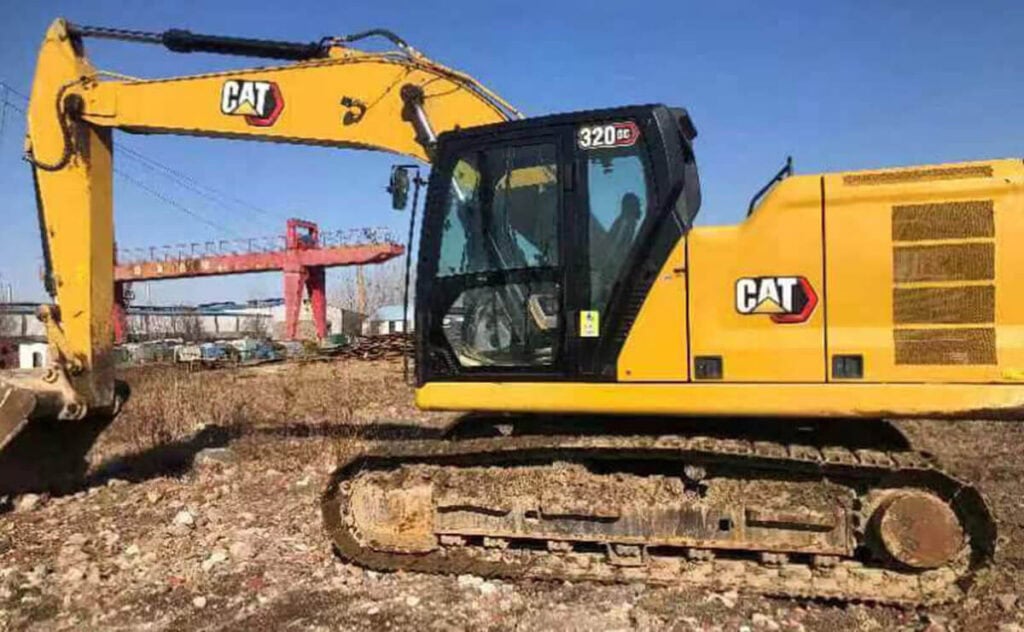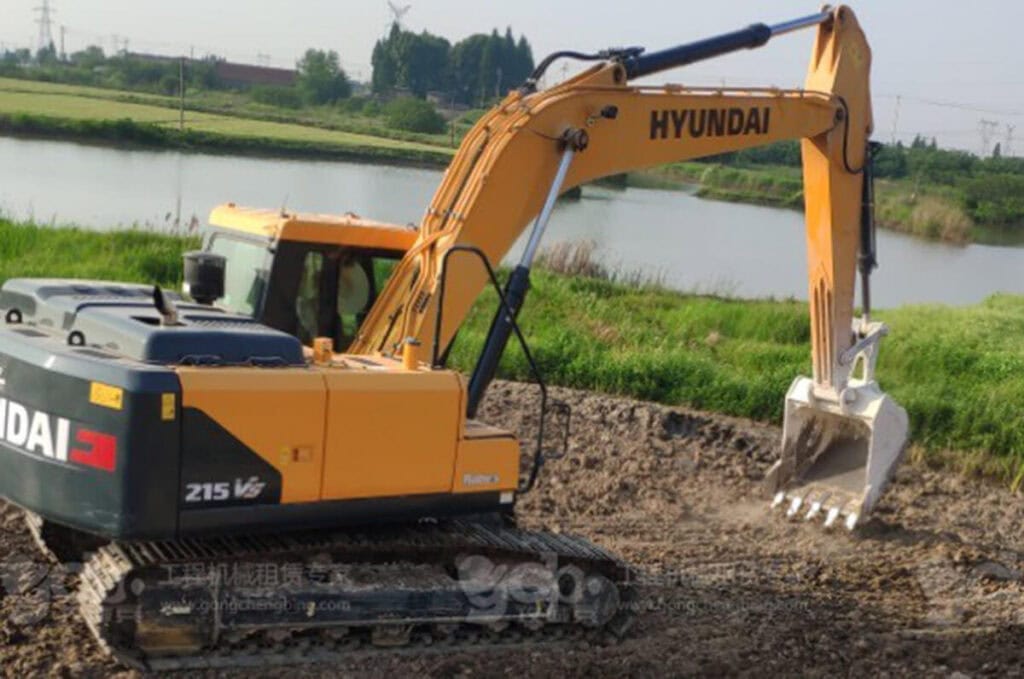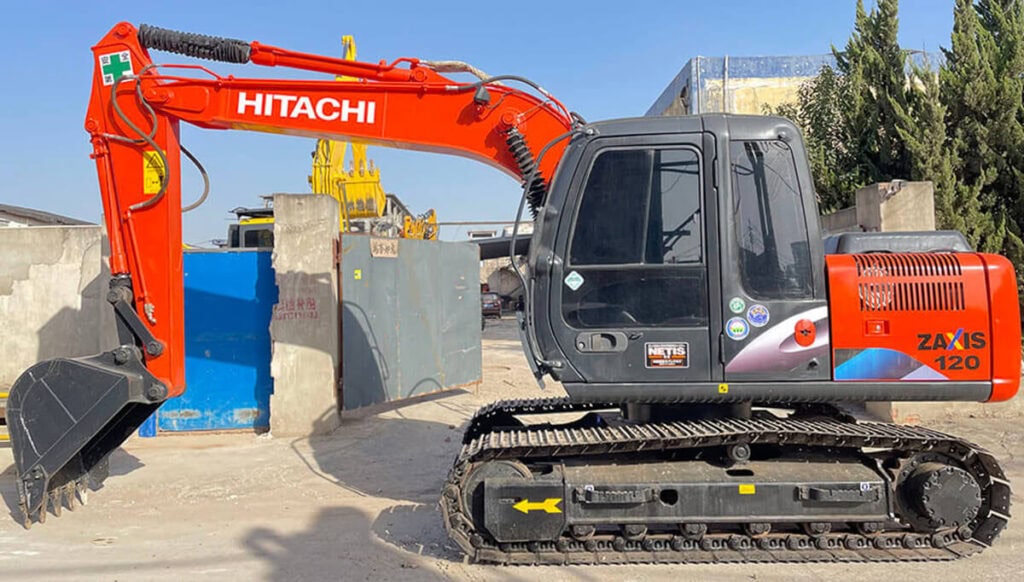What is the most reliable excavator? Get the wrong excavator and you’ll have a lot of breakdowns, too high a fuel consumption, and your projects will be delayed. There are about 30 brands of excavators. Within those brands, there are about 400 models. So, you can see you have a lot of opportunities to get the wrong excavator. Especially when you are buying used excavators internationally.
You may have already experienced issues like:
- Unclear machine history or fake refurbishment
- Lack of parts availability in your country
- Overpaying for poor-quality machines
- Difficulties in verifying engine hours or component wear
This is particularly frustrating when you’re under pressure to meet project timelines or maintain profit margins. To avoid that mistake, you need a disciplined way of evaluating the reliability of an excavator. It doesn’t matter if it’s new or used. Here is a structured system along with the key signs to watch out for and tools to use to identify that the machine you are buying will work consistently on the job site.

1. Start by Identifying Your Job Requirements
Before you choose an excavator, the most important step is to understand the needs of your unique project. What works for a small landscaping job won’t work for a quarry where you need a big excavator. The term “reliable” means different things based on the needs at the job site. Are you looking for a machine that will run all the time, one that’s easy to fix and repair, or do you need something that can withstand crushing rock over the long term?
Key Project Considerations:
| Proje türü | Recommended Excavator Size | Excavator Type | Key Features Needed |
|---|
| Residential Housing | 1–6 tons | Mini Excavator | Compact size, minimal noise |
| Kentsel inşaat | 6–15 tons | Small Excavator | Maneuverable, low emissions |
| Road Construction | 20–30 tons | Standard Excavator | Long reach, fast swing speed |
| Quarry Operations | 35+ tons | Large Excavator | High engine power, large bucket |
| Utility Installation | 6–12 tons | Wheeled Excavator | Road mobility, multiple attachments |
Other essential factors include:
- Operating Hours/Day: More hours demand stronger components.
- Operator Experience: Novice-friendly controls may be a priority.
- Material Type: Rock, sand, or clay will affect your undercarriage wear rate and hydraulic demands.
Bonus Tip:
If you are going to be working in tight urban lots, you will want the short-tail swing models. These machines don’t have as big an overhang on the back. But if you will be working in the woods out in the middle of nowhere, you want a machine with as few mechanical systems as possible so you can fix it in the field.

2. Evaluate Brand Reputation and After-Sales Support
There are some brands that are trusted worldwide for a reason. They have great machines that have been well engineered, and they have great service networks. You can usually depend on these brands not only for the machine’s performance, but for easy repair, parts availability, and service responsiveness. Machines from reputable manufacturers tend to hold their value better at trade-in time.
Top Excavator Brands and Their Strengths
| Marka | Notable Strengths | Global Service Network | Common Feedback |
|---|
| Tırtıl | Durability, Resale Value | Excellent | “Built to last” |
| Komatsu | Technology Integration, Fuel Efficiency | Excellent | “Smart and efficient” |
| Hitachi | Smooth Hydraulics, Electronic Reliability | Good | “Precise performance” |
| Volvo | Operator Comfort, Eco-Friendliness | Good | “Very comfortable to operate” |
| SANY | Competitive Pricing, Rapid Expansion | Moderate | “Good value for the price” |
What to Look For:
- Authorized Repair Centers: Are they near your location?
- Spare Parts Access: Are replacement parts easily available?
- Online Support: Are manuals and diagnostics tools accessible in your preferred language?
Pro Insight:
The tier one brands also have telematics systems like Product Link from CAT and KOMTRAX from Komatsu that help you keep in sync with maintenance and fault codes—they help you keep the machine running and avoid downtime.

3. Compare Core Excavator Specifications
To figure out which excavator is the most reliable for your project, measure and compare the machine’s core specs. Performance numbers such as engine power, bucket capacity, digging depth, and hydraulic flow all impact machine reliability and performance. An excavator that is underpowered for the work you are doing will wear out faster because you are working the machine harder all the time.
Excavator Specification Comparison Table
| Model | Çalışma ağırlığı | Engine Power (HP) | Max Dig Depth (mm) | Bucket Capacity (m³) | Hydraulic Flow (L/min) |
|---|
| CAT 320D | 21,000 kg | 148 | 6,700 | 0.8 – 1.2 | 250 |
| Komatsu PC200-8 | 20,000 kg | 155 | 6,600 | 0.8 – 1.1 | 246 |
| Hitachi ZX210LC | 21,000 kg | 160 | 6,900 | 0.9 – 1.1 | 260 |
| Volvo EC220DL | 22,000 kg | 172 | 6,800 | 1.0 – 1.2 | 270 |
Important Features That Enhance Reliability:
- Auto-idle systems reduce fuel burn and engine stress during downtime.
- Load-sensing hydraulics adjust flow, reducing component wear.
- Steel track shoes last longer than rubber in rough conditions.
Key Takeaway:
Always match the machine specs with the job requirements. You can have too much machine on a job, and it will be inefficient and expensive, or you will wear out a smaller machine because you are making it work too hard.

4. Analyze Fuel Efficiency and Environmental Compliance
A reliable excavator isn’t just strong. It’s economical and compliant. Fuel is one of the biggest long-term costs in construction, and fuel-inefficient machines suck the profit out of a job. Finally, many regions require compliance with strict emissions regulations such as Tier 4 Final or Stage V.
Yakıt verimliliği & Emission Compliance Comparison
| Brand/Model | Fuel Consumption (L/hr) | Emission Standard | Eco Modes Available | Idle Shutdown |
|---|
| Komatsu PC210-10 | 11–13 | Tier 4 Final | Yes | Yes |
| CAT 320 Next Gen | 10–12 | Tier 4 Final | Yes | Yes |
| Volvo EC200E | 12–14 | Stage V | Yes | Yes |
| SANY SY215C | 13–15 | Tier 3 | Yes | No |
Why It Matters:
- Lower fuel burn means less engine stress, contributing to a longer engine life.
- Compliance keeps you safe from fines and operational restrictions in emission-regulated regions.
- Eco features like auto-idle and power mode optimization help reduce unnecessary energy loss.
Expert Tip:
Look for models with real-time fuel consumption monitors and customizable working modes that allow you to dial the power up or down for the job.

5. Consider Maintenance Requirements and Ease of Service
Even the strongest excavator in the world becomes unreliable if it is hard to maintain. Maintenance frequency, parts availability, and ease of service all impact the uptime of a machine. A reliable excavator offers quick access panels, remote diagnostics, and long service intervals.
Maintenance Feature Comparison Table
| Model | Daily Maintenance Points | Uzaktan teşhis | Service Interval (Hrs) | Onboard Alerts |
|---|
| CAT 320 Next Gen | 3 | Yes (Product Link) | 500 | Yes |
| Komatsu PC200-10 | 3 | Yes (KOMTRAX) | 500 | Yes |
| Hitachi ZX200-5G | 4 | No | 250 | No |
| Volvo EC210DL | 3 | Yes (CareTrack) | 500 | Yes |
Features to Prioritize:
- Ground-level service points save time and increase safety.
- Centralized grease points simplify lubrication tasks.
- Diagnostic systems reduce the need for manual troubleshooting.
Pro Insight:
Look for a machine with a detailed maintenance manual and video tutorials, especially if your operators aren’t as experienced.

6. Review Real-World User Feedback and Field Reports
In addition to all the brochures and brand claims you’ve read, real-world performance gives you the truest measure of reliability. Field reports from contractors, rental agencies, and equipment resellers tell you how these machines behave over time, in different dirt types, and with various levels of work.
Sample User Feedback Summary
| Model | Uptime Rating | Common Praise | Common Complaint |
|---|
| CAT 320D | ★★★★★ | Strong hydraulics, resale | Expensive parts |
| Komatsu PC200-8 | ★★★★☆ | Fuel efficient, durable | Slower support in some areas |
| Hitachi ZX210LC | ★★★★☆ | Smooth control, quiet cab | Hydraulic leaks (older units) |
| SANY SY215C | ★★★☆☆ | Affordable, fast delivery | Inconsistent component quality |
Sources: Online forums, rental yard logs, customer testimonials.
Evaluation Tips:
- Ask for references from other buyers.
- Check auction resale trends—machines that hold value often lasted long.
- Visit job sites using the model you’re considering, if possible.

7. Balance Reliability with Budget Considerations
Finally, your decision must balance performance with budget. Reliable doesn’t always mean expensive. Brands like SANY, SDLG, and Doosan sell machines with decent performance for a fraction of the investment, especially if you’re just moving dirt for a living doing medium-duty workloads.
Budget vs. Reliability Matrix
| Budget Range | Recommended Brands | Average Lifespan | Best Use Case |
|---|
| High ($100K+) | CAT, Komatsu, Hitachi | 10,000+ hours | Large fleets, heavy-duty sites |
| Medium ($60K–$100K) | Volvo, Hyundai, Kobelco | 8,000–10,000 hrs | Contractors, rental companies |
| Low ($30K–$60K) | SANY, Doosan, SDLG | 6,000–8,000 hrs | Startups, light-duty work |
Financial Tips:
- Consider used excavators with verified service records.
- Explore leasing options to access premium brands with lower upfront cost.
- Ask about extended warranties for peace of mind.
✅ Summary (Most reliable excavator)
Selecting a reliable excavator involves evaluating the brand, construction & core specs, fuel efficiency, maintenance ease, real-world performance, and your project budget. Match your choice to your job needs for long-term success.
🏁 Çözüm
Choosing the right excavator is a big deal because you don’t want it to break down, burn fuel like crazy, or slow you down, but you have no shortage of models, features, and a variety of brands from which to choose. Which is why you need an organized process to evaluate an excavator’s reliability, whether you’re buying new or used. You need key metrics and tools to pick a machine that will do what you need it to do on a job without shutting down.
Start by identifying your projects specific needs. What works for a landscape project doesn’t work for a rock quarry. What you consider reliable depends on what you expect. Is reliability machine uptime, is it easy to maintain, or can it take a beating, like a hammer on a piece of steel?
For small, tight urban footprint work a short tail swing style is the best option. For a job site out in the middle of nowhere where the machine needs to be easier to repair, smaller is better, especially if it doesn’t have an extra complex mechanical system. Trusted global brands like CAT and Komatsu not only build a good machine, but they also have a strong parts service network.
They can teach you how to fix it. They can get you parts for it, and they can show up with a tow truck if you beat production too hard one day. You can buy a telematics system to monitor hours, maintenance, and machine codes all day long in real-time so you can schedule making a repair rather than having a breakdown.
To compare reliability listings, look at the core stats between four models and four different brands of machines. Your big clue is to run the machine that meets your job requirements, not what model gives you the swamp or dig depth or hydraulic flow for the lowest price. An oversized machine out of the water is slow, big, and burns a ton of fuel. An undersized machine in the creek gives up after you run it too hard on a project. Make the machine do what you need it to do based on the specs to make you more money and have less downtime.
Another consideration is maintenance. A big vintage of a particular or some brand solves nothing if it’s the pig at service time. Look for machines with remote diagnostics, greasing points centralized, and long service intervals. These things cut the life out of you in downtime and keep you at work more in the field. Don’t overlook an excavator field report from other operators or contractors. It’s the only way to know how a particular machine behaves over time because any manufacturer can have a Monday run or a Friday night build or assembly, and it’s a dog.
Finally, your choice is all about performance versus dollars paid. Reliable doesn’t always mean it cost out the butt. You can get a decent running machine from a no-name brand like SANY, SDLG, or Doosan at a fraction of the cost. Especially if you’re just moving dirt for a living and doing medium-duty workloads.
At HIOSEN, we understand the importance of picking the right machine. With over 15 years in the used construction machinery export business, we help people around the globe find high-quality excavators that somebody else has taken care of in the past, that meet their job requirements and their budget, and we do it safely, and on the money, on time, and delivered with trust.